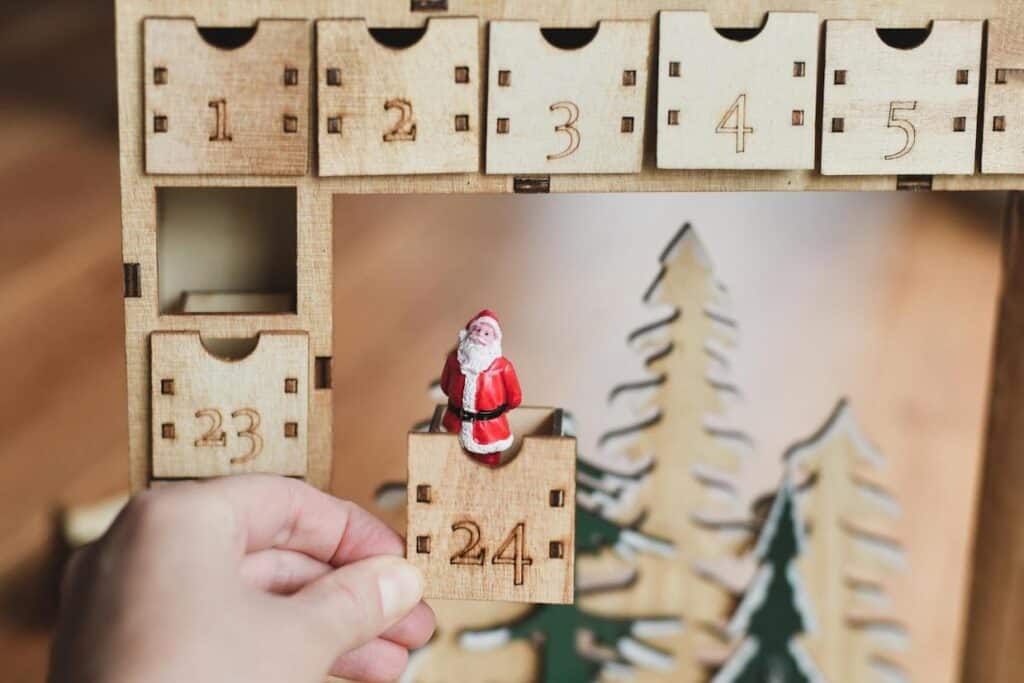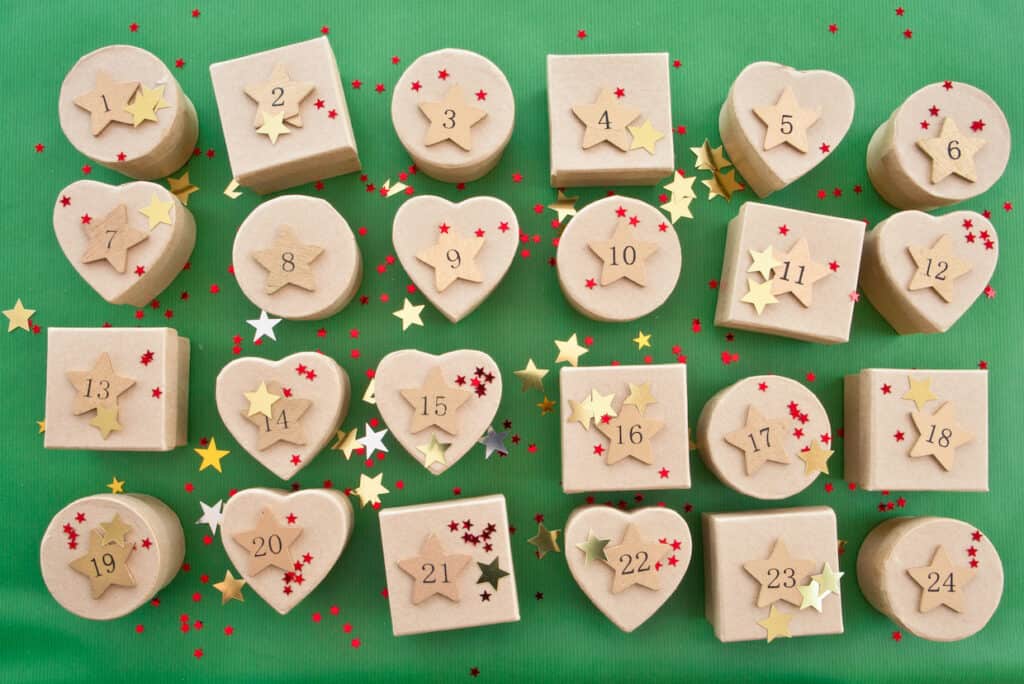When you think about the Advent calendar, you probably think about a coated card stock with 24 colorful windows on it. It was designed to help you countdown to Christmas.
Maybe, as a child, you propped them up on a window sill or tacked them onto a bulletin board. Then, every morning, you would open the window that corresponded to the date and get rewarded with a treat, such as chocolate.
Interestingly, the advent of this calendar had nothing to do with either windows or chocolate.
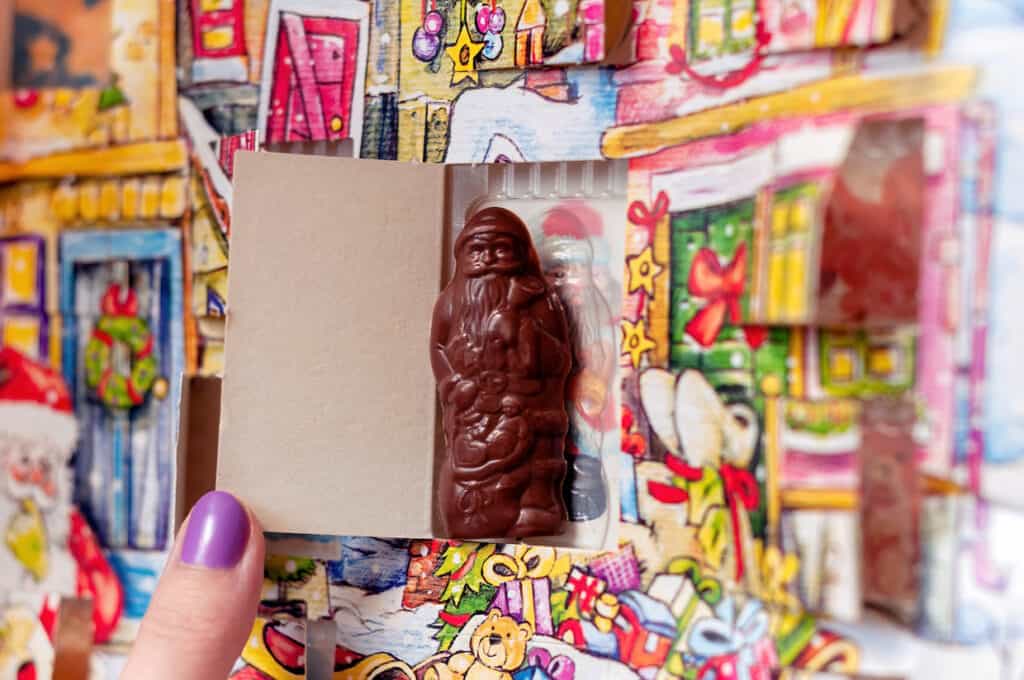
Where did the Advent calendar tradition start?
Popular lore says that German Protestants in the mid-19th century were the first people to commemorate the countdown to Christmas with something physical. Except they did not use an actual calendar.
Instead, at the start of the Season of Advent, which comprises the four Sundays before Christmas, they lit candles each night leading up to Christmas. Or they used chalk to make hash marks on the wall, much like a child might do to countdown to the first day of school.
It’s not clear if this activity was designed to remind them to make Advent a solemn period of reflection. Or if it was a way to build excitement leading up to Christmas.
What is clear, according to NPR, is that some German families decided to hang up different devotional pictures to commemorate each day of Advent. And this was the precursor to the Advent calendars you know today.
Inventor of the calendar
At the turn of the century, two things changed regarding the Season of Advent. Of course, it still existed — and still does — but there was a modern twist to it.
That was when a German inventor named Gerhard Lang created the concept of a printed Advent calendar. Also, he made his version for 24 days only — versus the nearly month-long period of those four Sundays before Christmas.
Why 24 days? Well, it’s practical because you can start the calendar on December 1 versus having to finagle things to include four Sundays before Christmas. Plus, Lang grew up enjoying a 24-day homemade precursor to the Advent calendar.
“As a child he had received 24 cookies sewn onto the lid of a box by his mother,” said the German Christmas Museum, “and he was allowed to eat one of them every day during the Advent period. Remembering this, he produced the first printed and commercial Advent calendar in 1908.”
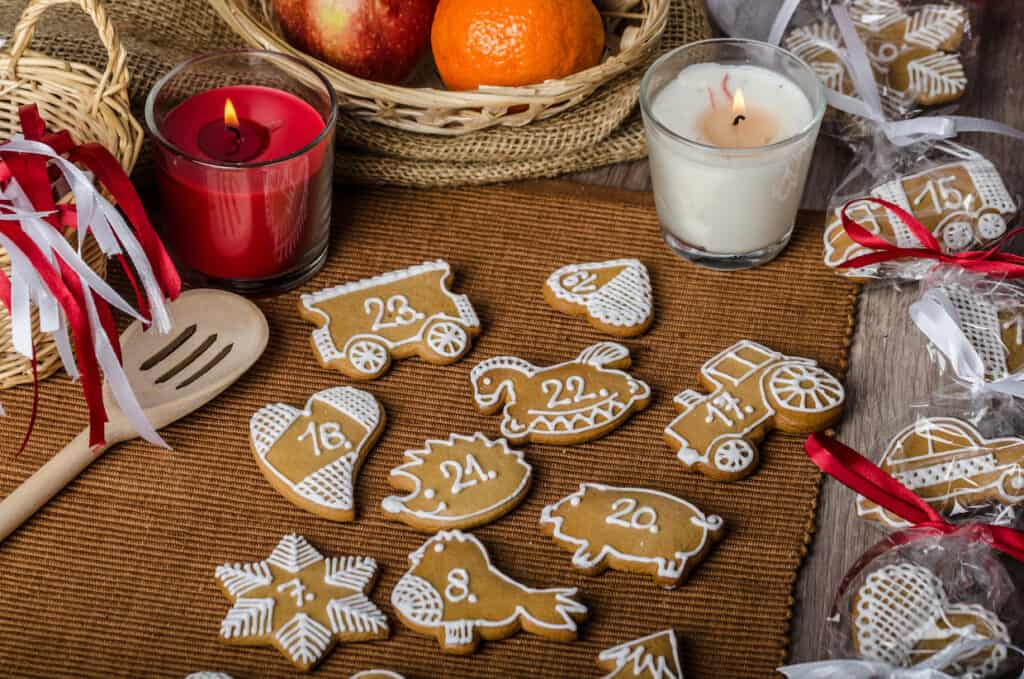
NPR reported that by the 1920s, Lang tweaked the design to include windows that you could open. Behind the windows? Scenes or quotes from the Bible.
Bringing the Advent calendar to America
That same NPR story said that American servicemen discovered Advent calendars — already popular in Germany and England — while serving overseas. Then they brought them back home to America after World War II.
In 1971, British confectionery Cadbury produced the first Advent calendars with chocolate behind each window. The tradition didn’t really catch on, however, until Cadbury started producing the chocolate-infused calendar annually in 1993, the BBC reported. Suddenly, more people developed a taste for this Christmas tradition and there was no looking back.
“We LOVE advent calendars in my house. When my kids were small, we did the traditional chocolate advent calendars,” said Michelle Price of Honest and Truly, “but as my kids got older, we got more creative. Every year, my son gets a new LEGO Advent calendar and my other kid gets a fancy chocolate one. And most importantly, we have an Advent calendar we made for my cat where he gets a special treat every day, too!”
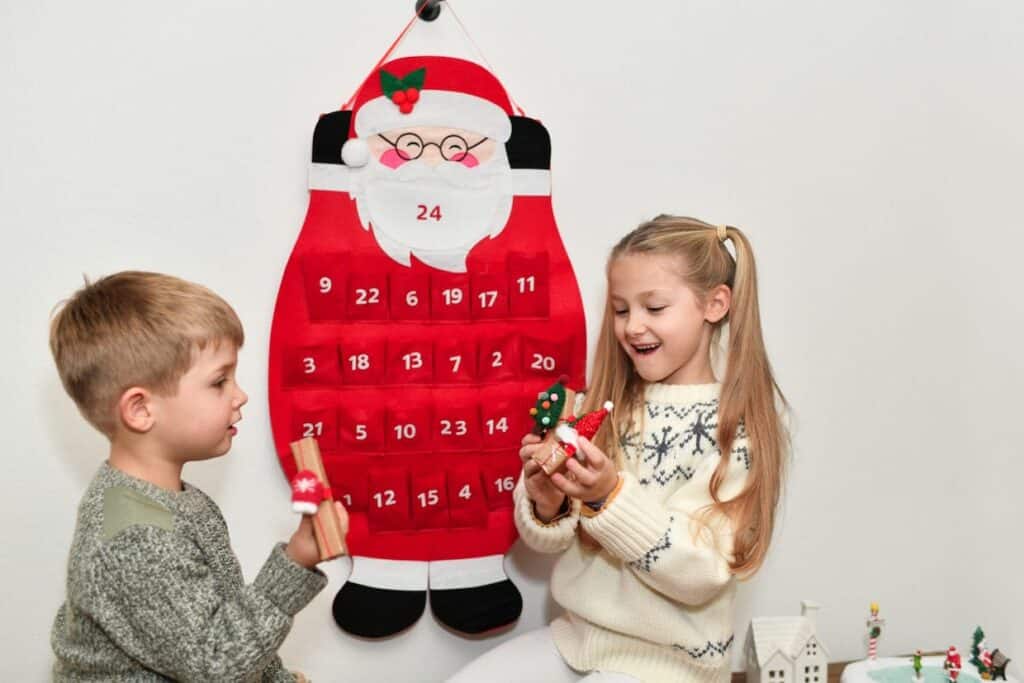
When do Advent calendars start in December?
Thanks to Lang’s creation, here’s how the modern Advent calendar works.
- It starts on December 1.
- There are 24 windows that you open.
- You open one each day based on the calendar date.
- You open the last window on December 24 or Christmas Eve.
Popularity of these Christmas calendars
Today, Advent calendars can be made of various materials, such as paper, wood or fabric. Not all include chocolate. Some do-it-yourself Advent calendars might include 24 bags or 24 boxes filled with keepsakes or edible goodies.
And, boy, have they become popular. VYPR, a consumer-insights company, surveyed shoppers about Advent calendar purchases. They found that 55 percent of them had planned on buying an Advent calendar for themselves or someone else.
Anticipation calendars
In addition, marketing experts say that Advent calendars — which they refer to as anticipation calendars — have mass appeal during the holiday season and beyond.
“Anticipation calendars also give consumers the opportunity to experiment with products the recipient has not tried before,” reported marketing intelligence company Mintel. “From simple interactive cardboard calendars with sweets affixed behind a series of easy-to-open doors, the concept of ‘counting down the days to Christmas’ has become an elaborate enterprise.”
In other words, Advent calendars aren’t just for children anymore. One of the newer iterations of this holiday staple is the luxury Advent calendar. The Washington Post reported about extravagant ones, ranging from $600 makeup calendars to a $100 wellness one. Even department stores like Saks Fifth Avenue and Nordstrom have started stocking Advent calendars.
For some, buying, making or giving an Advent calendar has become an expected part of holiday traditions, even for grownups. Take Jere’ Cassidy of One Hot Oven.
“My family and I are all tea enthusiasts, so I came up with the idea of creating Advent Tea Calendars,” she explained. “Every year, during Thanksgiving, I gift these calendars to our friends and family so they can enjoy them throughout December. To make it extra special, I collect unique and specialty teas throughout the year to include in the calendar. This has become a tradition that everyone loves, and I love making them.”
Whether you prefer a traditional Advent calendar or a more modern version with unique and possibly luxury surprises behind each window, there is sure to be one that suits your style, taste and budget.
Leah Ingram is the author of 15 books, including “Suddenly Frugal: How to Live Happier and Healthier for Less” and “The Complete Guide to Paying for College.” She shares shopping advice for getting the most value for your time and money at Leah Ingram Real Sophisticated Consumer.
